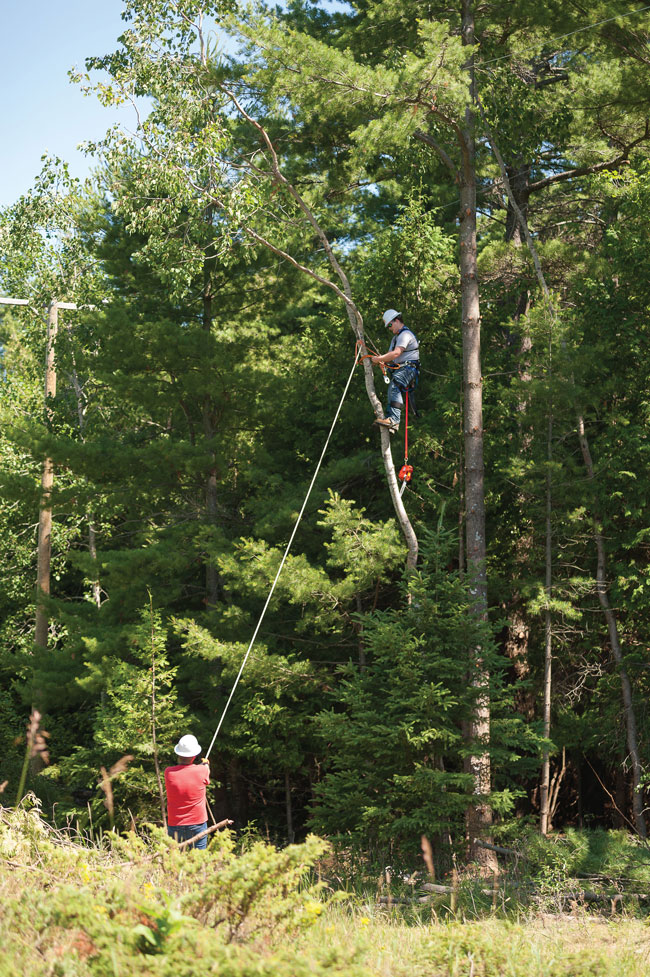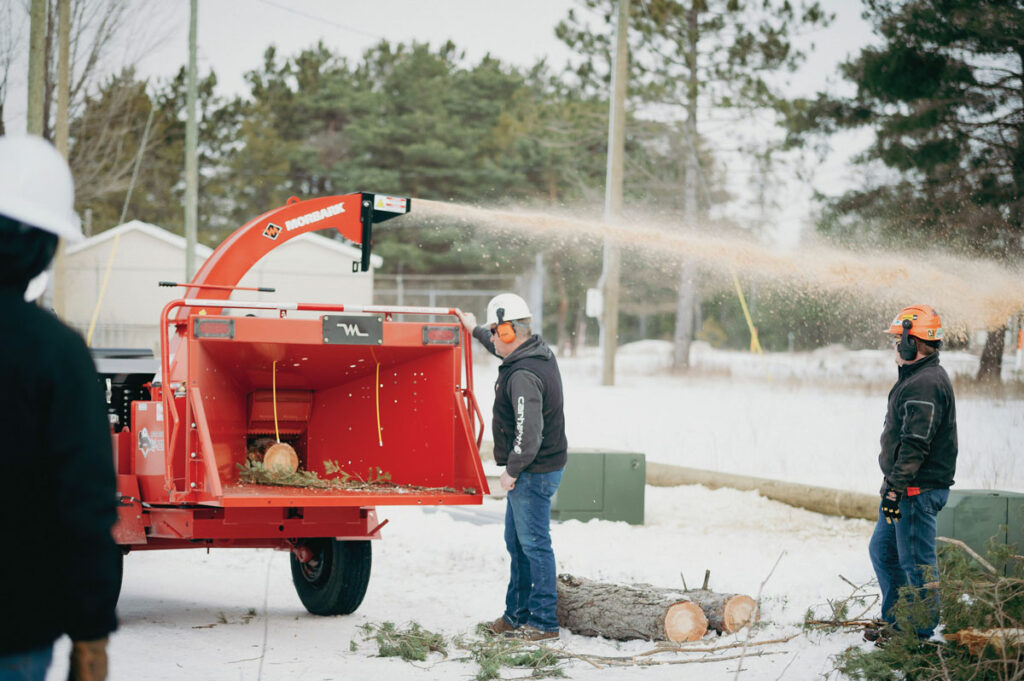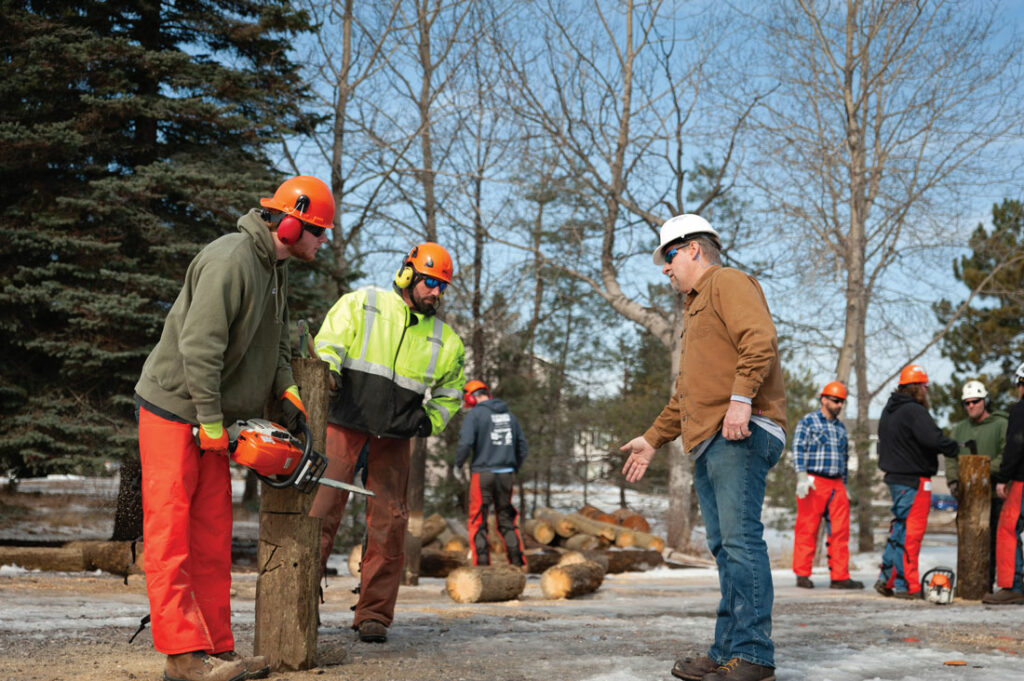Tornados in Michigan are unexpected and rare—but they can, and will, happen. Proof is the EF-3 class tornado that tore through Gaylord, Michigan, in May of 2022, leaving a swath of destruction and claiming two lives.
After the tornado, area residents were left without power. That is when the utility lineworkers and line-clearance arborists rolled in to begin the massive restoration process.
What is the difference between lineworkers and line-clearance arborists? While the lineworker focuses on the equipment related to the electrical conductor, line-clearance arborists focus on the vegetation surrounding energized systems. Neither can function properly without the other.
Utility companies and line-clearance contractors both constantly scrutinize weather forecasts and right-of-way maintenance in anticipation of events. When an outage occurs, the power company is dispatched to assess the damage while line-clearance arborists are alerted to clear the trees and vegetation from the damaged power lines after the utility company de-energizes them. It is a true team effort.
The second significant difference between the two job titles is training. Traditionally, if someone wanted to become a line-clearance arborist, they would apply at a tree service company, go through their orientation, and then complete close to one year’s worth of on-the-job training. Conversely, lineworkers often undergo substantial classroom and field training, over an extended period.
Tree service workers in general face many hazards in the course of their work. Those hazards increase further for line-clearance arborists whose work involves electrical lines. That’s why proper training is so important. Alpena Community College (ACC) has taken its mastery of training lineworkers and expanded it to offer a safety-centric certificate program for line-clearance arborists. This new, noncredit, one-semester Utility Arborist Line Clearance Program is designed for those interested in working in this industry, allowing students to complete the required training and have the potential for job offers in just four months. Work in the program is coordinated with the established Utility Technology Certificate Program and allows the Utility Line Clearance students to build skills around de-energized primary wires, which is not offered by similar programs at other institutions.
Making a living as a line-clearance arborist has many of the same draws as a utility lineworker: excellent compensation, opportunities to grow, the freedom to work outside, a team environment, the ability to help people—and the thrill of climbing. The ACC program is built for those who like to work outside, are adventure seekers, are up for a challenge, are able to work in a team, and do not want to sit in an office.
For more information on how to become a line-clearance arborist or to register for the training program, contact Program Director Walter Wiltse at 989-358-7284 or wiltsew@alpenacc.edu, or visit https://discover.alpenacc.edu/programs/degrees_and_programs/utility_arborist.php.
By Dawn Stone, Amanda Sumerix, Lisa Blumenthal—Alpena Community College









